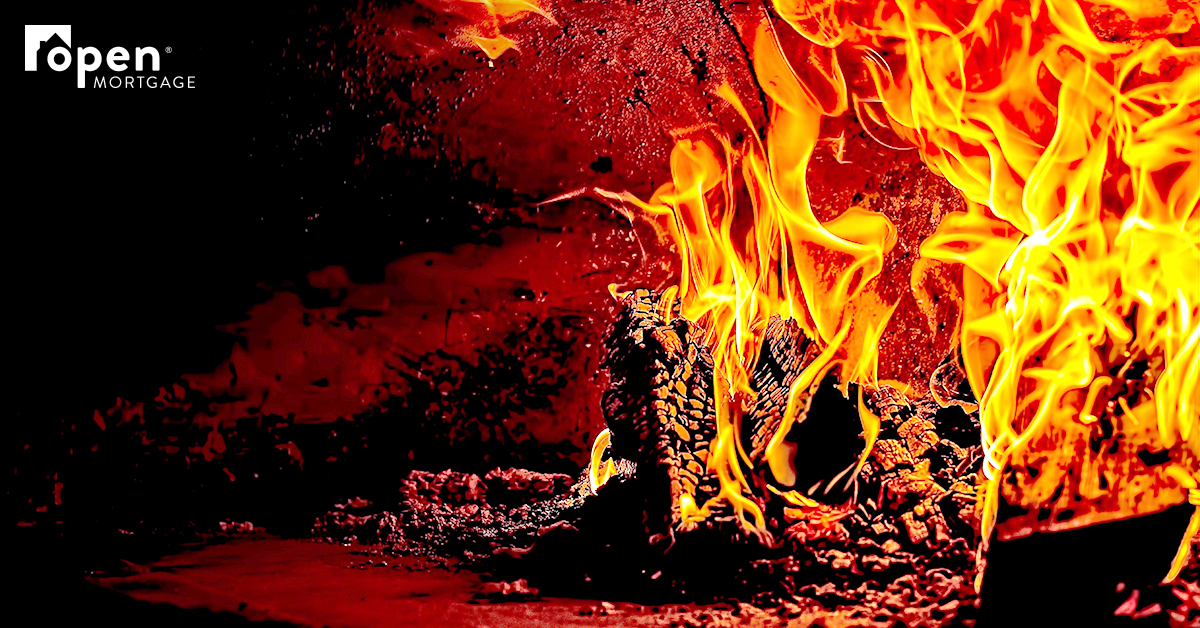
Six Ways to Lower Your Home’s Fire Risk
For many homeowners and homebuyers, fires are a distant concern.
But recent data gathered by the National Fire Protection Association paints a different picture. In 2015 alone, fire departments across the United States responded to a staggering 365,000 home structure fires, which caused $7 billion worth of property damages. The bottom line: fires are a subject we should all think about!
Fortunately, there are are six simple ways to significantly lower your home’s fire risks. By taking these steps, you can help protect yourself, your loved ones, and your property.
- Avoid smoking indoors and always use an ash tray
Smoking is the single biggest cause of home fire deaths, and many fires begin from a still-lit cigarette butt lighting a flammable home object. You can lower cigarette risks by not smoking indoors, always using an ashtray, and making sure to completely put out any cigarette. - Use smart decisions when building a fire in your fireplace
If your home has a chimney and fireplace, always open your damper and glass doors when you build a fire, and use a metal mesh screen to prevent embers from escaping. Also never burn materials other than firewood in your fireplace, as burning common household items and cardboard can emit toxic chemicals.Store firewood at least 30 feet away from your home, rather than on your back porch. - Keep a close eye on your stove when you’re cookingConsidering more than 60% of cooking fires begin on the stove, never leave your stove unattended and always pay close attention to what you’re cooking. Clean your kitchen surfaces regularly to reduce grease buildup, and keep a fire extinguisher in your kitchen (such as under your kitchen sink).
- Be smart with your plug-in electrical appliances
Make sure your appliances and their cords / wires aren’t in a location that someone can trip over them, and avoid placing wires and cords under rugs and nails. If any appliance puts off a strange smell, turn it off and unplug it immediately. Either dispose of the appliance or have it repaired by a professional.Be especially careful with space heaters—place them in a location where they can’t be easily tipped over and keep flammable objects like clothes and blankets at least three feet away. - Regularly test your smoke alarms and replace their batteries
Smoke alarms save lives! Install smoke alarms in every sleeping room, outside each separate sleeping area, and on on every home level.As added protection, you can interconnect your smoke alarms, meaning when one sounds, they all sound. - Make a fire escape plan
Even with the best prevention strategies, a house fire can sometimes happen. In this instance, the most important thing is following a fire escape plan.Because smoke from a fire can disorient your senses (especially at night), make sure you and your family members have several planned and rehearsed escape routes. These can be through a window, a front door.Make sure you and every family member know how to open any window or door used as part of your escape plan. For excellent advice on creating a fire escape plan that your entire family can learn and remember, visit the American Red Cross website.
Fire prevention should be on every homeowner’s radar
While homeownership brings a wide range of benefits, it also brings responsibility. One of the biggest responsibilities is protecting your home from a fire, which helps protect yourself and your loved ones.
You can significantly lower your fire risks by following the steps listed in this article. For more detailed information on reducing fire risks, visit the National Fire Protection Association website.





